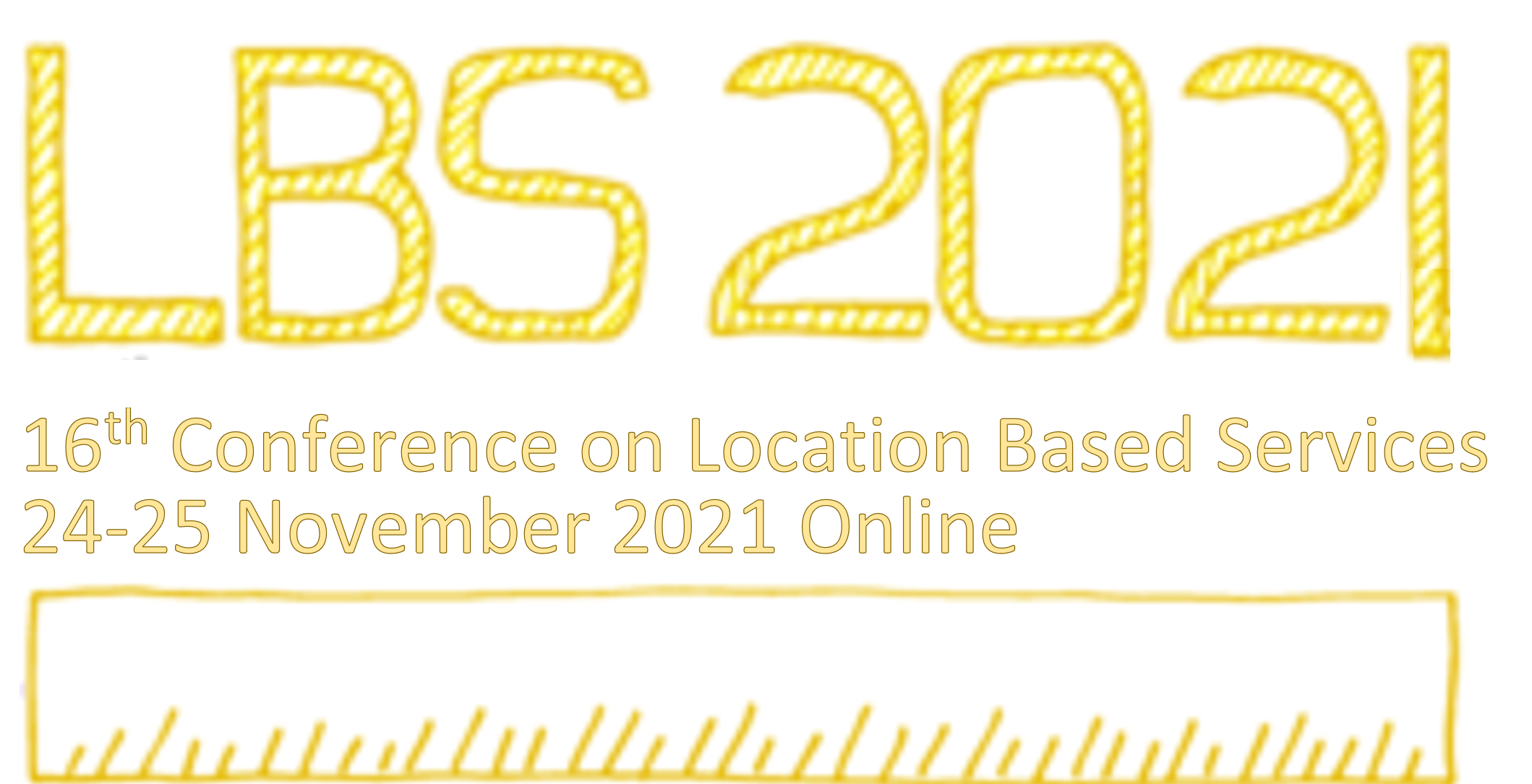Use your browser’s search function to find a specific paper.
Section I: Wayfinding and Navigation Systems
Zhiyong Zhou, Robert Weibel, Kai-Florian Richter and Haosheng Huang
Towards a hierarchical indoor data model from a route perspective
Fangli Guan, Zhixiang Fang and Haosheng Huang
Representation and modelling of the complexity of street intersections for navigation guidance
Laure De Cock, Nico Van de Weghe, Kristien Ooms and Philippe De Maeyer
Adaptive mobile indoor route guidance, the next big step
Tong Qin, Weihua Dong and Haosheng Huang
Indoor wayfinding in real-world environments and virtual reality: A comparison
Jingyi Zhou, Jie Shen, Jiafeng Shi and Litao Zhu
Indoor navigation path visualization method considering the spatial characteristics
Litao Zhu, Jie Shen and Georg Gartner
Ontology-driven context-aware recommendation method for indoor navigation in large hospitals
Section II: Positioning
Guenther Retscher, Pajtim Zariqi, Ana Oliva Pinilla Pachon, José Pablo Ceballos Cantu and Sasanka Madawalagama
Bluetooth Distance Estimation for COVID-19 Contact Tracing
Till Weigert and Guenther Retscher
Positioning Performance Evaluation of a Dual Frequency Multi-GNSS Smartphone
Delphine Isambert, Paul Chambon and Alexandre Vervisch Picois
PPP-RTK : the advantageous result of a hybridization of GNSS accurate positioning techniques
Maryam Jafari Tafazzol and Mohammad Reza Malek
A New Method for Indoor Positioning Based on Integrating Wireless Local Area Network, Bluetooth Low Energy, and Inertial Sensors
Wioleta Błaszczak-Bąk, Guenther Retscher, Joanna Janicka, Marcin Uradziński, Michał Bednarczyk and Jelena Gabela
Dual-frequency GNSS/Wi-Fi smartphone navigation
Section III: Location tracking and systems
Simon Gröchenig and Karl Rehrl
Towards C-ITS-based communication between bicycles and automated vehicles
Amna Anwar and Eiman Kanjo
Crime Prevention on the Edge: Designing a Crime-Prevention System by Converging Multimodal sensing with Location-Based Data
Caner Guney, Emre Tuncel and Hakan Ulagan
Employee Location Tracking in Retail Stores
Guilherme Spinoza Andreo, Ioannis Dardavesis, Michiel de Jong, Pratyush Kumar, Maundri Prihanggo, Georgios Triantafyllou, Niels van der Vaart and Edward Verbree
Building Rhythms: Reopening the Workspace with Indoor Localisation
Saman Shafipour, Mahmoud Reza Delavar and Abbas Babazadeh
Modeling accident hotspots to locate roadside equipment based on intelligent transportation system
Section IV: Mobility and Activity Analytics
Achituv Cohen, Sagi Dalyot and Asya Natapov
Machine Learning for Predicting Pedestrian Activity Levels in Cities
Eun-Kyeong Kim, Elena Ebert and Robert Weibel
The Effect of Post-Processing in Stop-Move Detection of GPS Data: A Preliminary Study
James Williams, James Pinchin, Adrian Hazzard and Gary Priestnall
Survey of Leisure Walking Behaviours and Activity Tracking Use: Emerging Themes and Design Considerations
Jing Huang and Tong Zhang
Personalized POI recommendation using deep reinforcement learning
Irma Kveladze, Pelle Rosenbeck Gøeg and Niels Agerholm
Understanding Mobility of Aalborg Commuters: A case study with a Floating Car Datasets
Francisco Porras Bernardez and Georg Gartner
Climate change and populists in geolocated Twitter
Seyed Ali Hoseinpour
A Real-Time Spatio-Temporal Bigdata System for Instant Analysis of Twitter Data to Monitor of Advertising Campaigns; Case Study New York City
Section V: User Studies, Visualization, and Analysis
Vilma Jokinen, Ville Mäkinen, Anna Brauer and Juha Oksanen
Would citizens contribute their personal location data to an open database? Preliminary results from a survey
Florian Ledermann
Small differences: Limits of Legibility of Cartographic Symbols on High- and Ultra-High-Resolution Mobile Displays
Zhenyu Liu, Runnan Fu, Linjun Wang, Yuzhen Jin, Theodoros Papakostas, Xenia Una Mainelli, Robert Voûte and Edward Verbree
Game Engine-based Point Cloud Visualization and Perception for Situation Awareness of Crisis Indoor Environments
Lars Sloover, Laure De Cock, Bart De Wit, Samuel Van Ackere and Nico Van de Weghe
On the Detection of Moving Objects in Laser Scan Data: the Highest Point of Interest (HPOI) Method
Gabriel Kerekes and Volker Schwieger
Towards Perceived Space Representation using Brain Activity, Eye-Tracking and Terrestrial Laser Scanning
Mina Karimi, Mohammad Saedi Mesgari and Omid Reza Abbasi
What Can I Do There? Extracting Place Functionality Based on Analysis of User-Generated Textual Contents
